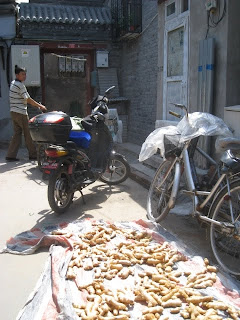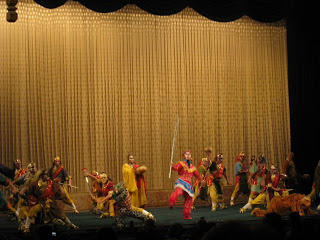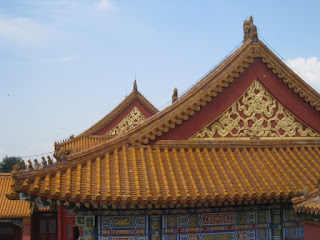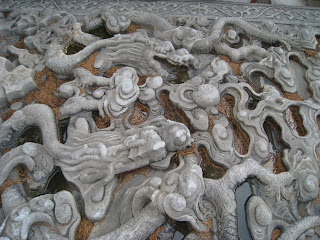Before our afternoon flight to Xi'an our driver dropped us off at the Drum and Bell Towers. These sit on the center axis of Beijing with the Forbidden City anchoring the South and now the Olympic Bird's Nest to the North. The bell tower marked time for Beijing people before the cultural revolution. Evidently the first item people bought after the revolution - with several month's salary - was a watch. The towers now serve as tourist sites with frequent ceremonial performances.
The government of China has designated a couple dozen Hutong communities as historic sites, though most have been torn down and replaced with modern buildings. The narrow alleyways are lined with primarily gray-walled windowless structures with periodic entryways that lead to family homes and complexes. Though some residents are enjoying economic prosperity, they have no access to sewage systems and must use common communal toilets that are owned and operated by the government. A monthly fee is charged for this convenience. The well off are able to upgrade their homes with solar showers, but no toilets.
After a rickshaw ride dodging bicycles, scooters, cars and pedestrians all jockeying for right of way we visited the home of Mrs. Wong which is right next door to a bed & breakfast - a new concept in this neighborhood. Mrs. Wong's home is 200 years old and has accommodated five generations of relatives. The lovely center courtyard has a bedroom and living room in the North rooms and kitchen and dining room to the South. (Note Mrs. Wong's sinkless kitchen!)
I always feel like a voyeur on excursions like this and try to be discreet as I snap photos. Yet these images of daily life are some of my favorite. I hope you enjoy these glimpses of our rickshaw ride around a Beijing Hutong.Postscript: Aboard our flight to Xi'an we were treated to views of the Great Wall and mountainous regions draped with farming steppes. Beautiful!


















































